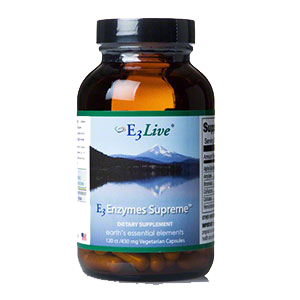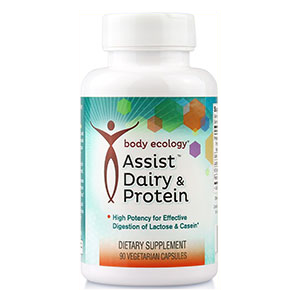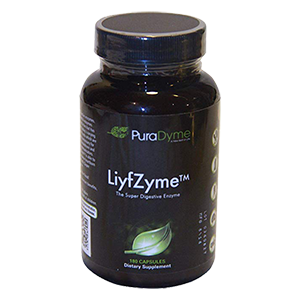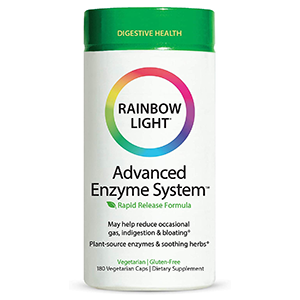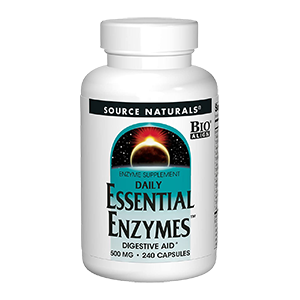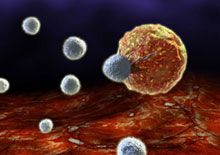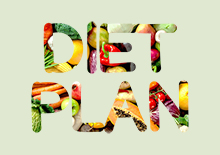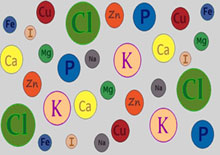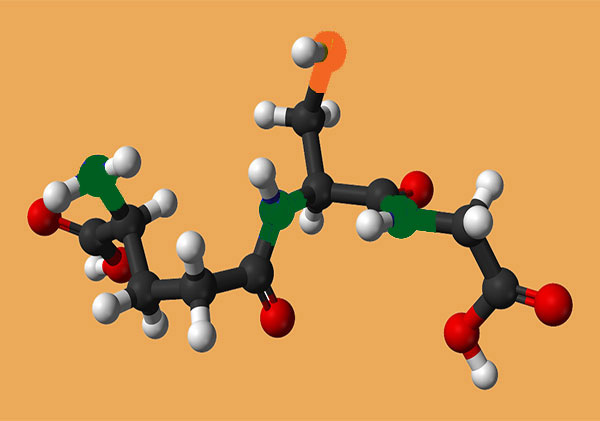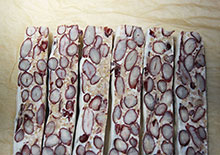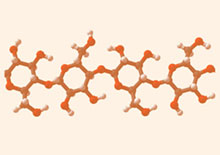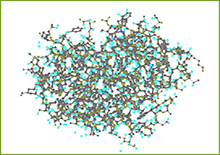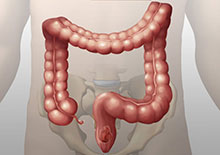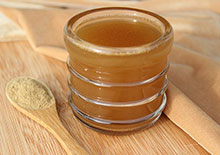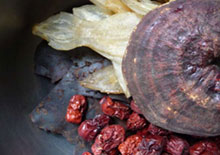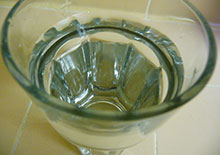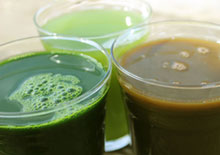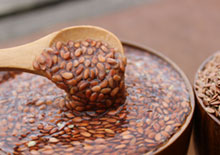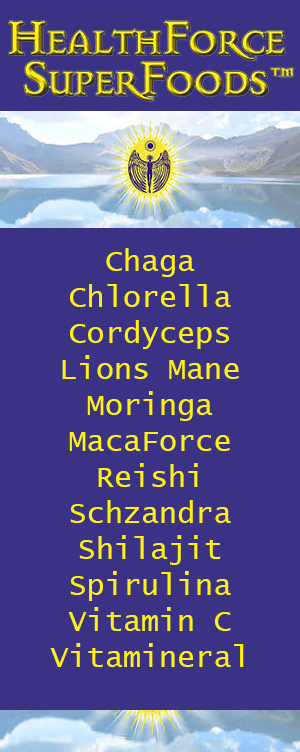Digestion of the Foods We Eat, Importance of Healthy Digestive Fire
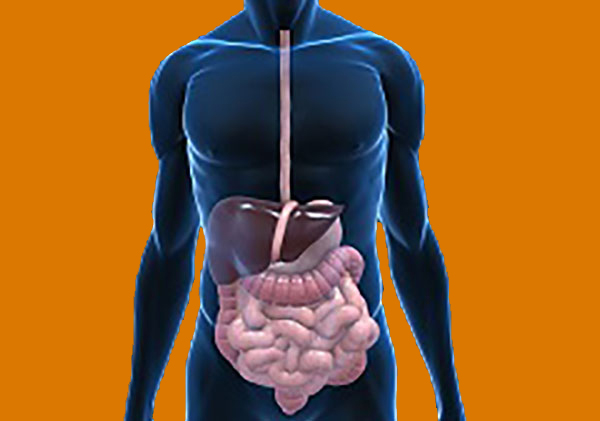
Good digestion of the foods we consume is imperative to the functioning of all bodily systems and is the basic determining factor that makes optimal nutrition possible. It has often been said "you are what you eat", it would however be more accurate to say, "you are what you digest."
This important biological function is essential for breaking down our foods and drinks into usable nutrients that our body can utilize for energy, growth and cellular repair. Understanding this natural process and learning how to work with it, instead of against it, can be a key component to overall health over the course of a lifetime.
Chronic digestive problems can not only cause malnutrition, hinder the proper activities of the organs and glands, but have also been linked to immune system disorders as well as numerous diseases and health conditions.
Seemingly minor issues like flatulence, bloating, constipation, heartburn or indigestion can all be signs of gastrointestinal imbalance that, if not corrected, can potentially lead to more serious illnesses over time.
Digestion is where is all begins. If we can keep this system running smoothly through good dietary practices,
sattvic food choices as well as periodic cleansing protocols, we can
often prevent many unnecessary related health issues further down
the road.
Digestive Fire or Agni
In Ayurvedic terminology, our digestive capacity is referred to as "digestive fire" or "agni", which means 'to ignite.' Agni is one of the most important principles of Ayurveda, often called the "gatekeeper of good health" and in a broad sense refers to our ability to digest all aspects of life, on physical, emotional and spiritual levels.
"Jathara agni" is the central digestive fire that governs digestion of the foods we eat. When jathara agni is strong we are able to eliminate ama (toxins) and assimilate ojas (essential life energy), when it is weak ama can accumulate and cause problems.
In Ayurvedic medicine, there are many ways to strengthen and support one's digestive fire and prevent common symptoms that frequently go unrecognized by many people.
Signs of Good Digestion
- Regular bowel movements
- Stools that are a ripe banana-like consistency
- You are energized after meals
- Strong immune system
- Clear sinus passageways and strong digestive fire
- Clear supple skin
Signs of Bad Digestion
- Flatulence, abdominal bloating, heartburn
- Constipation or loose stools
- You feel tired after meals
- Weak immune system, with possible candida infection
- Excess mucus and food sensitivities
- Acne or skin rashes
The Basic Process of Digestion
Digestion of the food we eat occurs in the "digestive tract" and begins from the moment we start chewing or masticating our food and ends when unneeded waste material is defecated as feces.
The digestive tract, composed of the gastrointestinal tract or GI tract, is basically a series of organs, primarily the stomach, small intestine and colon connected by a twisting tube that goes from the mouth to the rectum. Other secondary elements of digestion include the tongue, salivary glands, pancreas, liver and gallbladder.
Digestion for humans begins in the mouth and continues throughout the gastrointestinal tract where larger insoluble food particles are transformed into smaller molecules of proteins, fats, carbohydrates, vitamins, minerals as well as beneficial food-specific phytochemicals, like polyphenols and antioxidants. These smaller substances can then be absorbed into the blood plasma or bloodstream and distributed throughout the body to provide for our nutritional needs.
Gut flora or microbiota in the GI tract, in addition to parts of the nervous and circulatory systems, also assist with digestion. Working together in a combined effort with nerves, hormones, bacteria, blood and the organs of the digestive tract, the complex task of digesting the foods and liquids consumed each and every day is achieved on some level.
To what degree our digestive capacities or digestive fire maintains throughout our lives it primarily up to us; our dietary practices and many other factors.
Stages of Digestion
- Chewing Your Food - When saliva is mixed with our food it helps to produce the catalytic enzyme called amylase which starts to break down food in the mouth. Lingual lipase is another digestive enzyme that is secreted by the salivary glands.
- Swallowing Your Food - Once food is swallowed it then moves through the esophagus where peristalsis begins to take place. This action produces involuntary muscular contractions that move the food toward the stomach organ and throughout the digestive tract.
- Stomach Digestion - From the esophagus food moves through the sphincter into the stomach, located between the esophagus and the small intestine. Here the food is mixed with more digestive enzymes as well as gastric juices or stomach acid.
- Small Intestine - Next, the digestive process then moves chyme (the partially digested food) from the lower stomach via the pyloric sphincter into the upper part of the small intestine called the duodenum. Here (with the assistance of the liver, gall bladder and pancreas) digestive juices, bile and enzymes are produced which separate nutrients. These molecules then pass through the walls of the small intestine into the bloodstream where they can be delivered and nutritionally utilized. Food usually arrives in the small intestine 1 hour after it is eaten, and 2 hours after the stomach has emptied.
- Large Intestine or Colon - When the chyme is exhausted of its nutrients, the remaining waste material passes from the last section of small intestine, called the ileum, and changes into the semi-solid fecal matter which pass to the large intestine. This is where gut bacteria proceed to further break down residual proteins and starches. Any waste products of digestion pass through the large intestine and out of the body through the anus as a solid feces or stool. The large intestine is also an essential component of the body's immune function. Gut microbiota present in the colon work in conjunction with the lymphatic system to regulate immune cell activity through the "gut-associated lymphoid tissue or GALT."
The Main Dietary Food Groups
- Carbohydrates - Groups of sugars, starches and cellulose. These are saccharides commonly divided into four categories: monosaccharides, disaccharides, oligosaccharides and polysaccharides. They consist of short to long chain sugars called simple or complex carbohydrates. These are of fastest to digest and absorb.
- Protein - Protein-rich foods such as beans, nuts, seeds, meat, dairy eggs, green leafy vegetables are broken down into amino acids and absorb through the small intestine into the bloodstream. The transit time for protein digestion is normally somewhere between carbohydrates and fats.
- Fats - Healthy dietary fats are transformed into fatty acids and glycerol, they are necessary for proper hormonal and neurological functions. Fats digest at a much slower rate than sugars or proteins.
Reasons for Compromised Digestion
- Untimely or indiscriminate eating
- Eating low quality foods that are highly processed
- Consuming too many cooked proteins and low fiber foods
- Poor food combinations
- Undercooking beans and legumes
- Low digestive fire
- Overeating; large meal portions
- Lack of sufficient digestive enzyme reserves
- Drinking too much alcohol, coffee or soda
- Glutinous grains in the form of bread, pasta, crackers and baked goods.
- Accumulation of undigested waste material in colon
Top Ways to Improve Digestion
We believe that it is possible to correct digestive issues with proper diet and cleansing protocols, along with beneficial supplements such as digestive enzymes, probiotics and vitamin/mineral powders, teas or tablets.
In addition, following some basic dietary practices can also help to improve acute or chronic digestive problems.
1) Food Combining
Because different foods have different transit times, learning the rules of food combining, or what foods digest well with other foods, can be a basic and simple way to ensure the most efficient digestion of foods we eat. This can help to prevent many of the negative side-effects that may occur after meals, such as indigestion and flatulence.
Food Combining Essentials: (Foods that are good combinations)
- Fruit----Leafy Greens or chlorophyll-rich foods
- Protein----Non-starchy vegetables and seaweeds
- Fats----Non-starchy vegetables and seaweeds
- Starchy vegetables----Non-starchy vegetables, fats, and seaweeds
- Grains----Seaweeds, fats, non-starchy vegetables
2) Blended Raw Smoothies and Soups
One of the easiest ways to take in foods when digestive issues are present is to blend them. This requires less energy from the digestive organs as they are essentially predigested. Sometimes consuming foods in this manner for one or two days can help alleviate digestive disturbance and get things back on track.
Raw fruits, vegetables, soaked nuts and seeds have living enzymes that also require less of the body's own digestive enzyme reserves. These blended foods are very hydrating to the gastrointestinal system and contain fiber content, both of which add cleansing elements and encourage bowel movements.
3) Chew Food Slowly in a Peaceful Environment
Mindful eating and chewing your food slowing in a relaxed setting might sound crazy, but our emotional state can largely impact food digestion. It is beneficial to not only eat slowly, but appreciate your meals; paying attention to the smell, color and taste sensations.
Thoroughly chewing foods and mixing them with the saliva in the mouth can help you to secrete more enzymes before swallowing. This places less of a burden on the stomach.
In the end, stools should ideally be very smooth without large particles of undigested material, a sign that you may have consumed your lunch or dinner too quickly.
4) Using Digestive Spices and Bitters
Adding herbs and spices to food is a great way to boost "digestive fire." This is a common practice in Ayurvedic therapies as a way to increase stomach digestion or "jathara agni." This may include using spices like ginger, cayenne, cumin, turmeric or coriander.
In addition, herbs that provide a bitter element can help with the secretion of digestive juices before a meal. "Digestive bitters" typically include herbs like dandelion, gentian or chamomile.
5) Fermented Foods
Many of the fermented foods we discuss on this website are high in enzyme content which help in the process of digestion. Raw unpasteurized sauerkraut, cultured vegetables, kimchi or miso can be consumed in small portions with meals. Other enzyme-rich liquids also include rejuvelac and coconut kefir and can be helpful digestive aids when consumed between meals.
6) Dietary Supplementation
When digestive capacities have been chronically compromised, it can be very beneficial to include various supplements that can supply needed enzymes as well as probiotics, vitamin/mineral and cleansing formulas to help restore balance.
Plant-based digestive enzyme supplements can be of particular benefit especially when used as an adjunct to a health promoting diet. In the article review entitled "The Role of Enzyme Supplementation in Digestive Disorders" published in the "Alternative Medicine Review" is states that "Digestive enzyme supplementation can aid in the breakdown of fats, proteins, and carbohydrates and may provide benefit in disorders in which compromised digestion may be involved."
7) Periodic Juice Fasting
This involves consuming fresh pressed raw chlorophyll-rich low-sugar fruit and vegetable juices exclusively for a short period of time.
Juice fasting can be a great way to give an overburden digestive system a little time off, so the body can catch up on eliminating any accumulation of undigested waste material in the colon and is a great way to cleanse the body of potential toxins.
8) Herbal and Food-Based Laxatives
Triphala, usually taken in tablet form, is a number one Ayurvedic herb for improving digestion and increasing bowel regularity. Other foods high in fiber and structural polysaccharides, like aloe gel and soaked flax or chia seeds, are also soothing to the intestines and encourage healthy bowel movements.
Precautions:
While you might wish to follow these general dietary guidelines for improving digestive capacities, it is best to seek the advice of a qualified healthcare provider when chronic digestion-related conditions are present. This may include leaky gut syndrome or other autoimmune diseases as well as serious health issues.
Shop Related Products (About Affiliates & Amazon Associate Paid Links)
Affiliate Disclaimer: This section contains affiliate product links. If you make a purchase through our recommended links, we receive a small commission at no additional cost to you. Thanks for the support.
